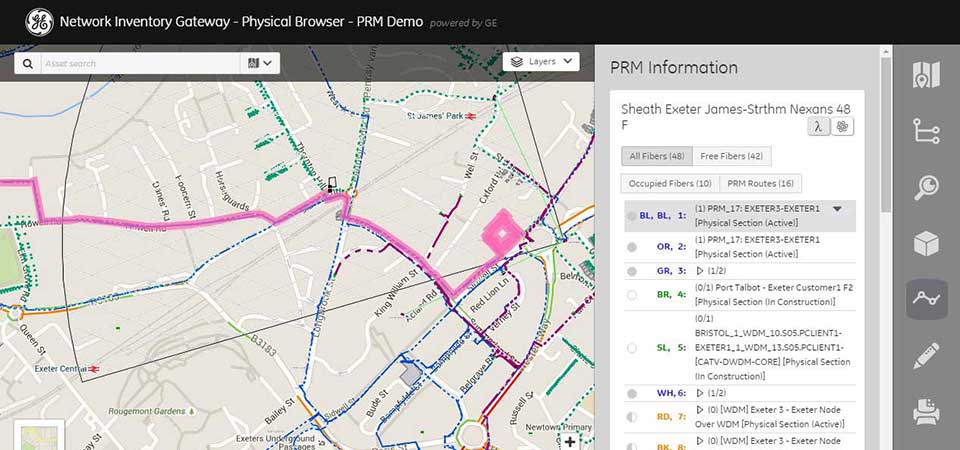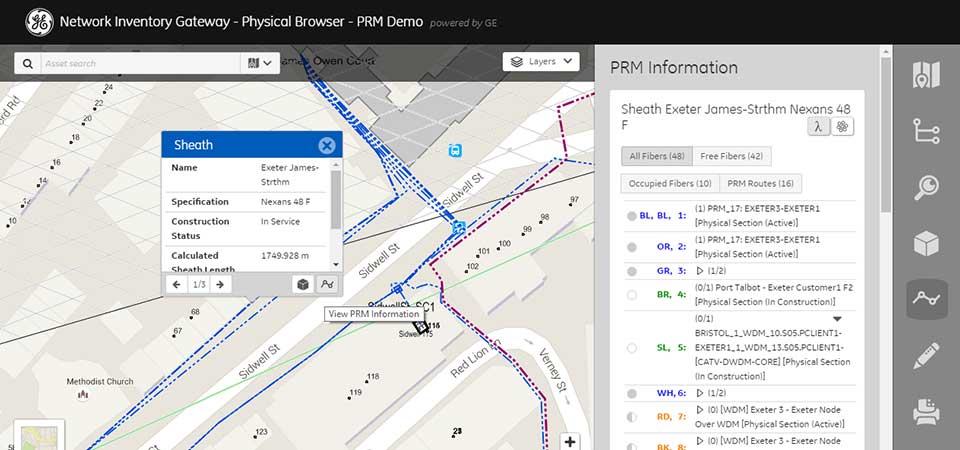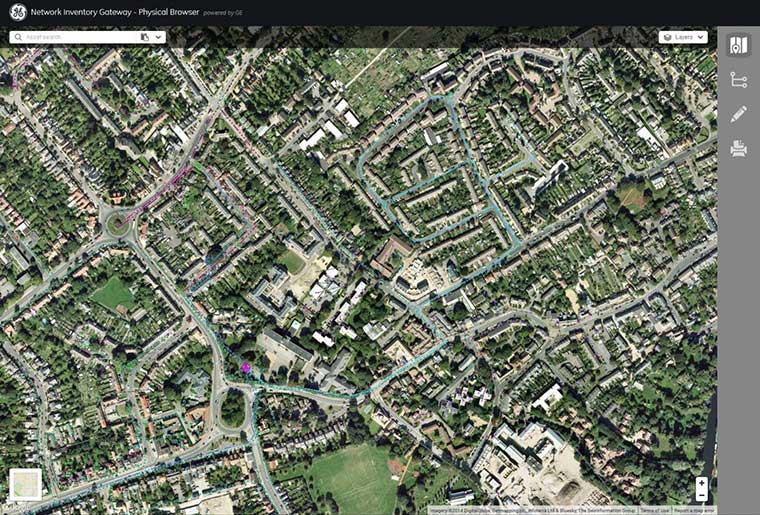
Smallworld Network Inventory Gateway (NIG) is a web-based front end application that provides thin-client internet and intranet access to data held within Physical Network Inventory (PNI). In order to provide NIG users with the easy access to the data and features of the commonly used PNI add-ons, Physical Route Manager (PRM) and Optical Network Atlas (ONA), Globema released new versions of these add-ons with NIG integration included.
Optical Network Atlas extends standard functionalities of Smallworld Physical Network Inventory with automatic generation of schemes for optical routes. ONA extension of NIG enables access and viewing of ONA schemes on NIG web clients. The extension uses the same engine as the standard ONA running with thick Smallworld client. This way it is assured that plotouts are always identical across applications and platforms. ONA schemes are available via web clients and can be easily shared with any third parties and field technicians. This new capability in NIG improves access to network data, including fiber schematics, in daily field operations.
Physical Route Manager allows grouping any number of physical resources into an easily accessible and manageable entity called “Route”. Routes facilitate modelling utilization of physical resources for data transmission services and fiber/pairs lease. PRM extension of NIG presents routes defined in PRM in thin web client in a similar way as in standard desktop Physical Network Inventory, using the same naming conventions and color schemes. Routes held in Smallworld database and managed by the PRM application are now easily accessible in the Internet and intranet, also for field technicians.

About Smallworld Network Inventory Gateway
Many potential users of Physical Network Inventory data require read-only access to the information related to their job. Network Inventory Gateway consists of two solutions, each targeted at different business needs:
- Physical Browser is a query, view, print web client that gives users access to the data held in Physical Network Inventory
- Fault Locator is a separate client that is focused on providing support for the workflow related to identifying the location of a fault within the fiber optic network.

About Physical Route Manager & Optical Network Atlas
Physical Route Manager allows grouping any number of physical resources into an easily accessible and manageable entity called “Route”. Route consists of mutually related elements, such as, fibers, ports, and splices that comprise a connection between two locations. Routes facilitate modelling utilization of physical resources for data transmission services and fiber/pairs lease.
Selected features and benefits:
- Automates building of physical routes based on existing connectivity (through assisted manual or automatic path routing)
- On-the-fly access to information about occupancy of PNI resources
- Resource reservation and management
- Highly optimized network tracing
- Increasing productivity and lowering error rates in route management
- Lowering cost of keeping PNI network up to date
- Planned route documentation and reporting
- Rich graphical representation of designed issues (route variants)
Optical Network Atlas extends standard functionalities of Smallworld Physical Network Inventory with automatic generation of schemes for optical routes. The tool automatically generates easily printable and legible paper documentation of the optical network fragments needed for network design, upgrades, deployment or maintenance. Schemes are generated using dynamically traced optical routes, starting from a given location or a splice using selected optical cables/fibers or ODF shelves/ports. All parts of a complex scheme (which usually includes numerous plans of cables, ISP, ODFs and splices) are divided during the generation process into separate pages (like in an atlas or book). ONA enables to present generated fiber schemes in various ways (on-screen within Smallworld application, as printed documentation or in PDF files).
Selected features and benefits:
- Fast & efficient generation of fiber diagrams – on demand and within PNI
- Detailed fiber network schemes with separate cable plans of cables, ISP, ODFs and splices
- Support for FTTH and PON networks with a separate scheme type
- Configurable schemes and printing templates
- Reduction of time needed to print documents and exchange schematics via email using PDF print
- Supports network design, reconfiguration and maintenance
- Mobile workforce productivity improvements for field operations.











